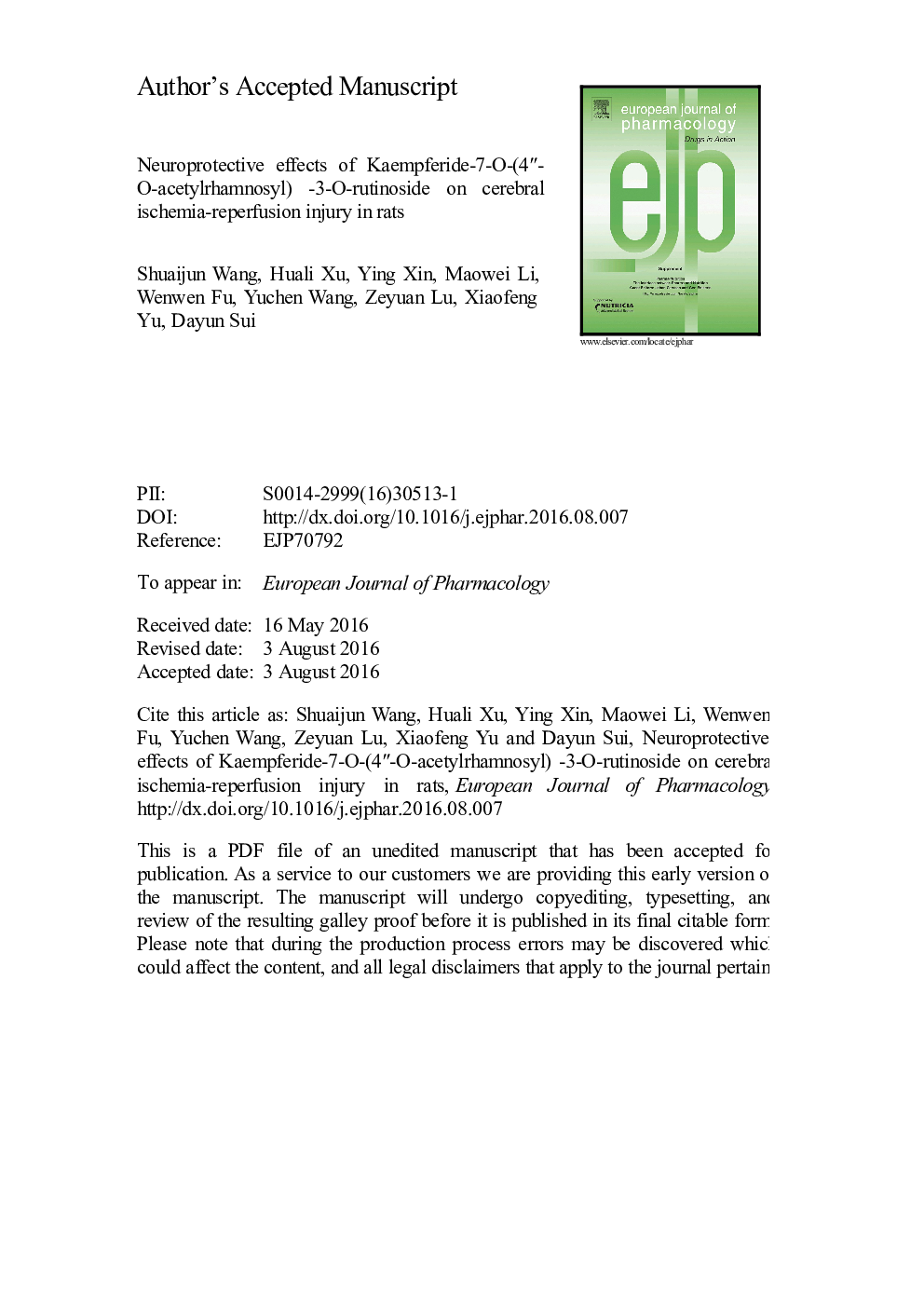| Article ID | Journal | Published Year | Pages | File Type |
|---|---|---|---|---|
| 5826645 | European Journal of Pharmacology | 2016 | 32 Pages |
Abstract
In the present study, we aim to evaluate the potential neuroprotective effect and the underlying mechanism of Kaempferide-7-O-(4â³-O-acetylrhamnosyl)-3-O-rutinoside (A-F-B) against cerebral I/R injury. Adult male rats were pretreated with A-F-B by intragastric administration once a day for 3 days. One hour after the third day administration, animals were subjected to 2 h of transient middle cerebral artery occlusion (MCAO) followed by 24 h of reperfusion. Neurological deficit, infarct volume, histopathological changes, oxidative stress-related biochemical parameters, neuronal apoptosis, apoptosis-related proteins and the expression of pro-inflammator cytokines genes were measured. A-F-B significantly decreased neurological and histological deficits, reduced the infarct volume, and decreased neuroapoptosis. Meanwhile, A-F-B inhibited the expression of Bax, cleaved caspase-3, cleaved caspase-9, and promoted Bcl-2 expression. In addition, the expression of pro-inflammator cytokines, including phospho-NF-kBp65, interleukin-1β, interleukin-6, tumor necrosis factor-α, intercellular adhesion molecule-1, cyclooxygenase-2 and inducible nitric oxide synthase, were also suppressed by A-F-B pretreatment. Furthermore, pretreatment with A-F-B could significantly increase the activities of superoxide dismutase, glutathione peroxidase, but decrease the content of malondiadehyde in blood serum. These results suggest that A-F-B has the neuroprotective effect in ischemic stroke by suppressing neuroinflammation, reactive oxygen species and neuroapoptosis.
Related Topics
Life Sciences
Neuroscience
Cellular and Molecular Neuroscience
Authors
Shuaijun Wang, Huali Xu, Ying Xin, Maowei Li, Wenwen Fu, Yuchen Wang, Zeyuan Lu, Xiaofeng Yu, Dayun Sui,
